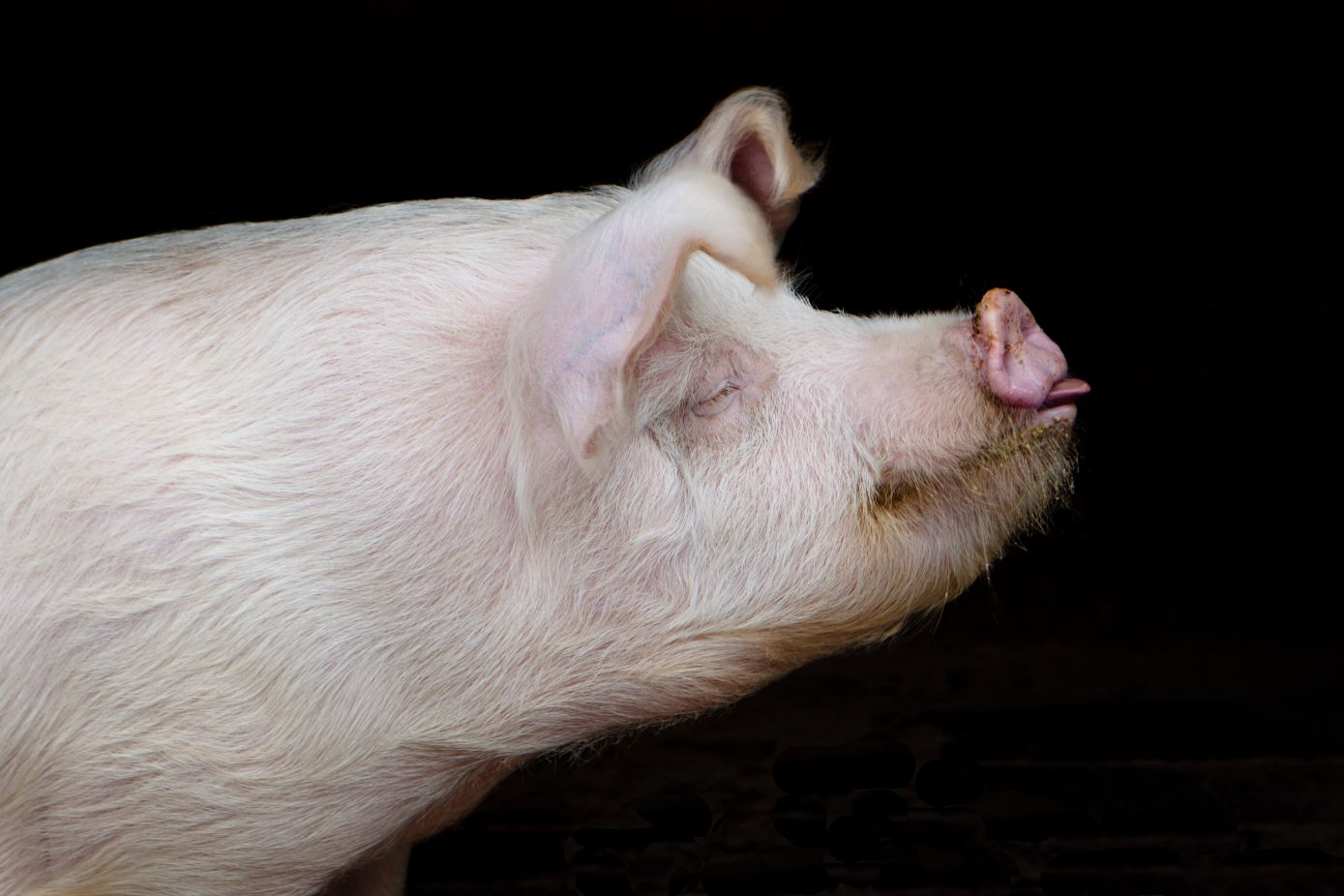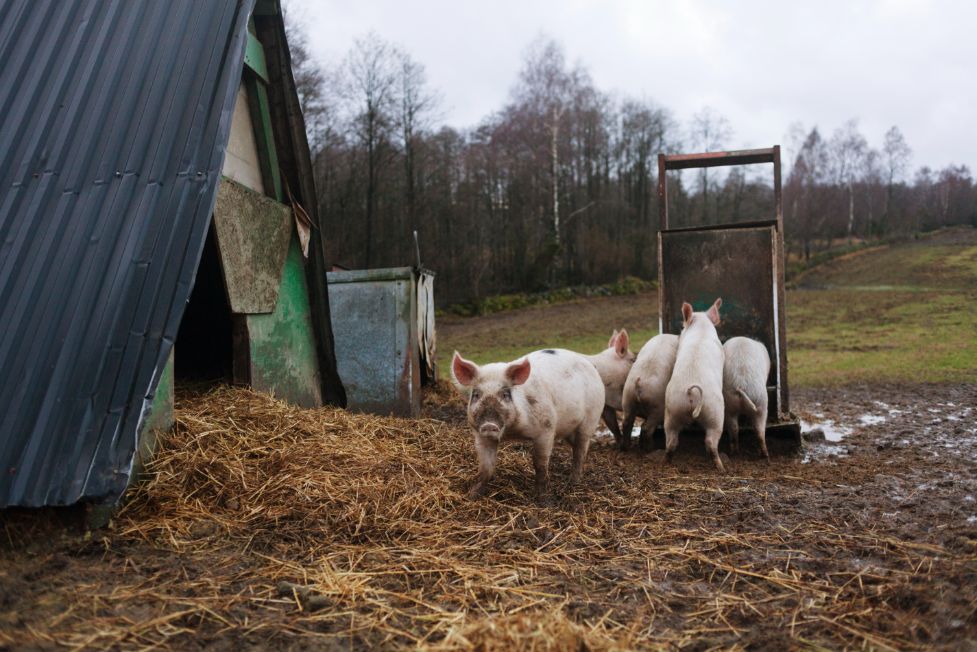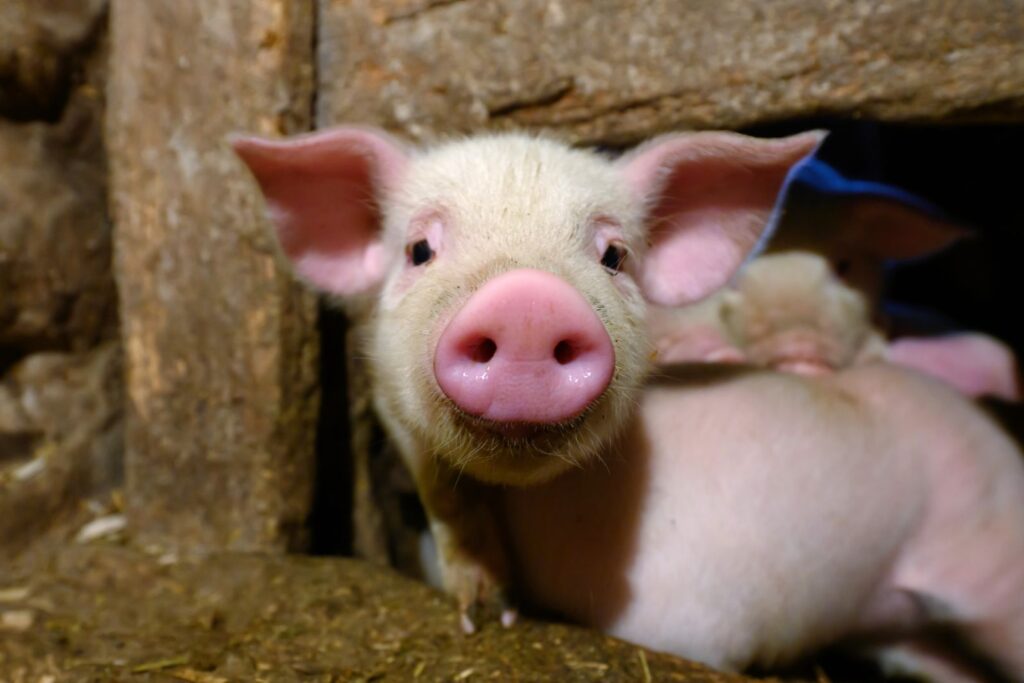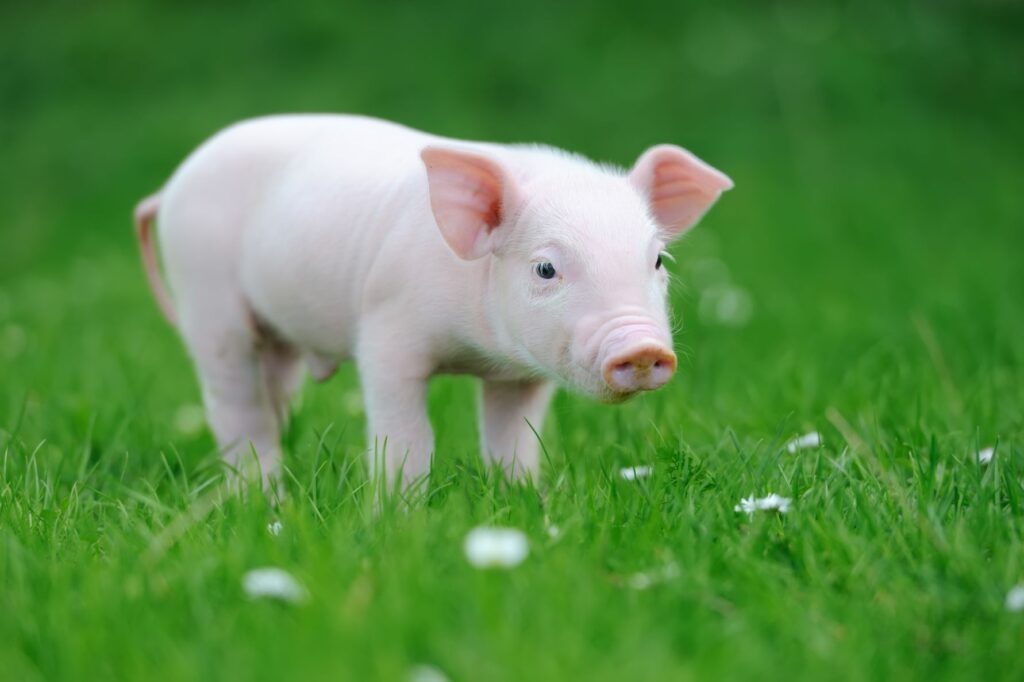Table of Contents
Pigs (also known as swine, hogs, or domestic pigs) attract admiration and resentment in equal measure. On the one hand, swine have a deplorable sense of hygiene that makes them unsuited for apartment dwelling.
Yet, on the other hand, these animals are incredibly smart and have been shown to display profound affection for their owners. Perhaps it’s due to their intelligence and affectionate nature that pigs have gradually become one of America’s most popular house pets.
But as with any pet, there are certain questions to settle before adopting a pig. You’d want to understand the animal’s dietary requirements, exercise needs, and life expectancy, among other considerations. In this article, we focus our attention on a pig’s lifespan.
How Long Do Pigs Live?
The domestic pig has a life expectancy of 15 – 20 years. That’s the same lifespan as several dog species. However, the 15-20 age range doesn’t apply to all pigs. Numerous factors determine the actual age a swine can live.
Some hogs might live for more than 20 years while others could die even before making their second birthday.
Difference Between the Life Expectancy of Domestic and Wild Hog
Although pigs have been domesticated by humans for hundreds of years, many of these animals still prefer living in the wild. Wild hogs share a near-similar genetic makeup with their domestic counterparts. However, these categories of pigs can differ considerably in their overall lifespan.
Wild swine may live up to 15 years if the conditions are right. But on average, their lifespan is a paltry 4 – 5 years due to the numerous challenges they encounter in the wild. Some of the key issues that reduce the longevity of wild hogs include;
- Natural predation
- Hunting by humans
- Habitat loss
- Health concerns
- Outbreak of disease
- Severe weather conditions
- Population density
- Genetics
- Nativity
Domestic pigs face close to ZERO threats of predation or hunting by humans. They also have better access to quality food and healthcare services. Besides, breeders have higher control over the genetic composition of their offspring, which might help in addressing hereditary medical conditions.
All these factors combine to give domestic hogs a longer life expectancy than their wild cousins. However, it’s important to note that domestic pigs may further be categorized into two groups, namely farm pigs and pet pigs.
Farm pigs are considered livestock and are mainly kept for their meat. Therefore, these hogs are often slaughtered in their prime age. Some may be slaughtered when they’re as young as six months. Besides, pigs used to produce piglets (commonly known as sows), typically live for 1.5 – 2 years before they’re culled.
On the other hand, pet pigs are kept for companionship. Such hogs face far fewer threats and usually die in old age. Environment is another crucial factor that may determine the difference in the life expectancy of farm pigs and pet pigs.
Farm pigs usually live in outdoor sites. Without efficient weather control mechanisms, these hogs may bear the brunt of dramatic fluctuations in the elements. Indeed, cases abound where chilly winter nights claimed the lives of farm pigs.
For comparison, pet pigs usually live in indoor environments with better temperature regulation mechanisms. So, even if farm pigs and pet pigs receive similar levels of care in terms of feeding and healthcare, the latter may still outlive the former.
What Is The Oldest Pig That Ever Lived?
According to the Guinness World Records, the oldest pig that ever lived was known as Baby Jane. Baby Jane was a Vietnamese potbellied pig that lived in captivity for 23 years 7 months and 9 days. The pig was born on February 1, 1998, and was raised by her loving human parents – Patrick Cunningham and Stanley Coffman – in Mundelein, Illinois.
She led a fairly active life before her death on September 10, 2021. Before Baby Jane, a pig known as Ernestine held the title of the oldest hog ever to have lived. Ernestine also lived for 23 years and a few months.
How to Increase Your Pig’s Life Expectancy
1. Go For the Best Breed
Certain pig breeds have been shown to live longer than others. That’s regardless of whether they’re domestic or wild. The longest-living hog breed is the Vietnamese potbellied pig.
2. Feed Your Pig a High-quality Diet
Pigs are omnivores whose diets should comprise a blend of plant and animal products. However, these animals generally prefer more greens than meat. So, in addition to regular pig pellets, ensure you supplement your hog’s diet with roughly 25 – 30% plant matter. Recommended options include carrots, cabbage, and peppers. A part of feeding your pig a high-quality diet also entails preventing the animal from snacking on unhealthy human foods behind your back.
Remember that swine are fairly intelligent creatures and won’t hesitate to open kitchen cabinets looking for something to scavenge on. You can reduce your hog’s access to unhealthy foods by keeping these products out of his reach. Besides, you could consider training the animal at an early age to only eat what you feed him.
3. Maintain Proper Hygiene
Pigs are natural foragers. Whether you own an outdoor farm hog or an indoor pet pig, it’s important to let the animal explore his surroundings using his signature rooting and sniffing technique. Let him roll around in mud whenever he pleases.
However, this isn’t an excuse to throw hygiene out of the window. It’s still important to bathe and groom your pig regularly, depending on his activity levels. This will provide you with an opportunity to check for parasites while also spending quality time together. Common grooming aspects include coat brushing, oral hygiene, and hoof care.
4. Enrich Your Pig’s Environment
Pigs have a love affair for the mud. So, start by making provisions for muddy puddles in your backyard. For indoor pigs, you might consider investing in interactive toys. These will help keep the animal stimulated even when you’re gone. Also, ensure your pig’s sleeping area is comfortable enough, especially in terms of the ambient temperature and noise levels.
5. Schedule Medical Checkups
Pigs require routine vaccinations and deworming to cushion them from various infectious diseases. That underscores the importance of scheduled visits to the veterinarian clinic. Besides administering the required vaccinations and deworming supplements, the vet will also examine your pig for any underlying diseases and recommend proper early treatments.
Conclusion
A domestic pig can live for 15 – 20 years or even more if the conditions are right. If you’re planning to adopt a pet pig, implementing the above-listed tips might go a long way in increasing the animal’s life expectancy.




